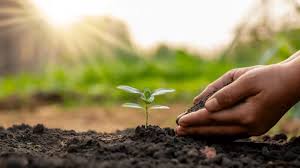
Genuine Care for a recently planted tree
Are you aware that you need no less than 500 trees for each person to match the carbon dioxide being produced every year? So, well done on planting your first tree; it will serve ages to come! The ball doesn't quit rolling with just planting a tree. Knowing how to suitably care for the recently planted tree is important, especially with the changing climate we face today.
Genuinely focusing on a tree the right way will ensure that it is strong, unfaltering, and impenetrable to most bugs and diseases. With the proper consideration, trees can live for quite a while.
With respect to that, how might you deal with a new tree? Keep reading to find five simple tips for proper caring.
Five Methods to Care for a Recently Planted Tree
Before you can plant, it's important to make sure you have the right tree and foster it entirely in the right area. A reasonable advice is to pick a tree between 3-5 years old. It allows the tree time to develop roots before being planted.

The next stage is to set up the area where you hope to plant the tree. Guarantee there are no stones or various things that could hurt the root system. After ensuring all lights are green, apply the following five phenomenal approaches to ensuring the tree persist:
1.) Watering:
After planting, watering should be done regularly to hold the roots back from drying out. It is prescribed to water the tree a couple of times each week for the initial months until the root network has developed. On the opportunity that you are not sure when to water, check the soil moisture level by tunneling around the foundation of the plant. You can use a soil test on the opportunity that you have one.
2.) Fertilizing:
Fertilize the tree immediately after planting. Fertilizing will help the tree develop faster and sturdier. A decent fertilizer for new plants is 10-10-10, which contains Nitrogen (N), Phosphorous (P), and Potassium (K). These enhancements are needed for healthy growth. Use fertilizers according to the rules on the package. Do whatever it takes not to apply an extreme amount of fertilizer as this would cause a supplement burn.
3.) Pruning:
Prune off any dead branches after planting. Dead branches use up space and make the tree all the more unprotected against bugs. They can moreover dry out quickly, making the trunk split.
4.) Pest Control:
It is critical to look out for bugs like aphids, scale bugs, mites, and slugs. There are two significant types of pesticides used for trees, Organophosphates and Carbamates-both work by upsetting nerve function. The most dependable decision is to pick natural pesticides. Natural pesticides contain normal ingredients and are not harmful for people, pets, and the environment. Regular Pest Control El Paso, TX will make sure your newly planted tree will be able to grow strong and healthy.
5.) Mulching:
Mulch holds moisture and battles weeds off. Using mulch will moreover add elegance to the garden. Different materials like wood chips, leaves, hay, sawdust, straw, or pine needles are remarkable choices. Just try to wipe out the mulch before winter.
Different Sickness that harms trees
Even though trees are the initial source of medicine and herbs that treat sickness and wounds, they are prone to infections. Like other living organisms, these sickness can be researched and treated accordingly.
Trees can be contaminated by various sickness, for instance, bacterial, fungal, viral, parasitic, bug or nematode diseases. These sickness could make the life of the trees end or lead to its decline in wellbeing.
Here we have listed 3 of the critical classifications of the most generally recognized sickness that impact trees:
1.) Bacterial Diseases
Bacteria are one of the most broadly recognized causes of plant’s sickness. They are microscopic organic life forms that increase their quantity rapidly. The bacteria are mostly found on dead leaves, bark, branches, twigs, roots, and soil.
Bacterial sickness can be divided into two classes - systemized and non-systemized. Systemized sickness spreads through the entire body of the plant, while non- systemized sicknesses attack specific pieces of the plants.
Bugs that Stays in or Nearby your Tree
Trees are among few living organisms that can exist for hundreds or thousands of years for some species. Trees are helpful to individuals and play an essential part in balancing nature. Aside from giving shade, trees can help with erosion control and further foster water quality. They give living space to wildlife and fill in as a major part of the ecosystem.
The advantages of having trees on our property are many, but the much-dreaded pests could prevent you from exploiting the advantages of having a tree. A couple of bugs may be more harmful than others, depending on what sort of pests attacks your trees.
For example, a couple of bugs will hurt the tree while various bugs feed off the tree. Various bugs like fungi, bacteria, and viruses don't directly hurt the tree, but their essence impacts trees.
Here is a list of the 6 most notable pests that can hurt your tree:
Termites
First on our summary are termites. They eat wood. They like to stay near your home. Termites hurt roots and weaken the foundation of the tree. They can cause holes in the trunk and branches. When this happens, there could be sap spilling out of the holes made by termites. When termite damage occurs in the crown of a tree, the leaves become yellow and wither off.
Conclusion
Trees are crucial in our present climate. They help with diminishing effects of natural change that the world has been encountering in the past few years. The more trees you plant, the more you are contributing towards working on the climate!
Leave a Reply.